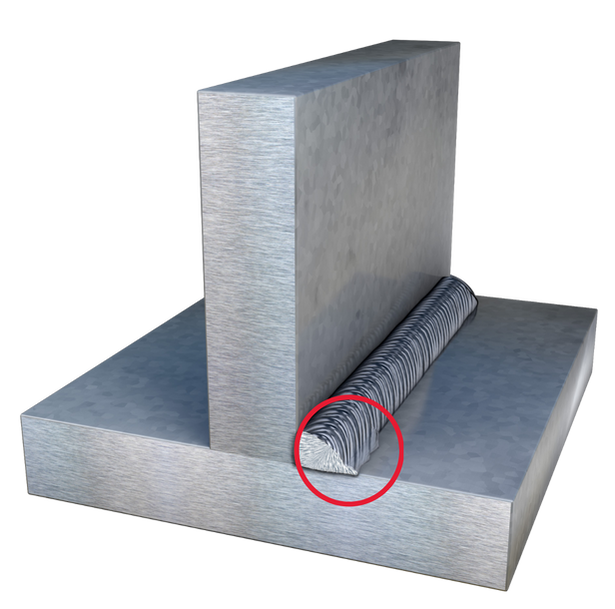Grasping the Art of Welding: Exactly How to Avoid Undercut Welding Issues for Flawless Fabrication Results
By recognizing the origin creates of undercut welding and carrying out efficient methods to avoid it, welders can elevate their craft to brand-new degrees of excellence. In the quest of remarkable manufacture results, understanding the art of welding to stay clear of undercut problems is not just a skill yet a necessity for those making every effort for perfection in their work.
Understanding Undercut Welding

To stop undercut welding, welders need to make sure appropriate welding specifications, such as changing the current, voltage, traveling speed, and keeping the right electrode angle. Furthermore, utilizing the proper welding technique for the details joint configuration is vital. Utilizing weaving movements or backstepping methods can aid ensure appropriate weld metal deposition and decrease the likelihood of undercut development. Regular examination of welds during and after the welding process is likewise critical to catch any undercut early and make necessary changes to stop more flaws. Preventing weld undercut. By comprehending the sources of undercut welding and implementing safety nets, welders can achieve high-grade, structurally sound welds.
Causes of Undercut in Welding
Comprehending the variables that add to undercut in welding is crucial for welders to produce top notch, structurally sound welds. When the weld steel does not properly fill up the groove created between the base metal and the previously transferred weld steel, damaging takes place. Several variables can bring about undercut in welding. One usual reason is too much warmth input. Welding at high temperature levels for prolonged durations can cause the base steel melting even more than preferred, causing damage. Insufficient welding current or incorrect welding rate can additionally add to damage. Inadequate current might not give sufficient warmth to thaw the base and filler metals appropriately, while too much speed can stop correct combination, triggering undercut. Additionally, improper electrode angles or inaccurate torch control methods can produce locations of low weld metal deposition, advertising undercut. Comprehending these causes and carrying out proper welding methods can help protect against damaging problems, making sure sturdy and strong welds.
Techniques to avoid Undercutting

To reduce the danger of undercutting in welding, welders can use critical welding strategies focused on boosting the quality and integrity of the weld joints. One efficient technique is to readjust the welding specifications, such as voltage, current, and take a trip speed, to guarantee appropriate warm input and deposition. Preserving a suitable electrode angle and ensuring constant traveling speed can likewise help protect against undercut. In addition, utilizing the proper welding method for the particular joint setup, such as weave or stringer grains, can add to lowering damaging. Preventing weld undercut.
Additionally, proper joint preparation, including ensuring clean base materials devoid of you could look here pollutants and making use of the suitable welding consumables, is essential in stopping undercut problems. Using back-step welding techniques and regulating the weld bead profile can likewise help disperse warmth evenly and decrease the threat of undercut. Routine assessment of the weld joint throughout and after welding, along with applying quality control actions, can assist in resolving and discovering undercutting concerns without delay. By implementing these strategies carefully, welders can attain flawless fabrication results with minimal undercut issues.
Importance of Appropriate Welding Criteria
Picking and preserving ideal welding parameters is crucial for attaining effective welds with minimal flaws. Welding specifications describe variables such as voltage, present, travel speed, electrode angle, and protecting gas flow price that straight impact the welding procedure. These parameters should be very carefully changed based upon the sort of product being welded, its thickness, more info here and the welding strategy employed.
Appropriate welding specifications make sure the correct amount of warm is put on melt the base steels and filler material evenly. If the parameters are set expensive, it can bring about extreme warm input, causing burn-through, spatter, or distortion. On the other hand, if the specifications are too reduced, incomplete combination, absence of penetration, or undercutting might happen.
High Quality Assurance in Welding Operations

Verdict
To conclude, mastering the art of welding calls for an extensive understanding of undercut welding, its causes, and methods to avoid it. By guaranteeing appropriate welding parameters and executing quality control practices, flawless construction outcomes can be achieved. It is necessary for welders to regularly pursue excellence in their welding operations to avoid undercut problems and produce top notch welds.
Undercut welding, an usual defect in welding procedures, occurs when the weld steel doesn't appropriately load the groove and leaves a groove or clinical depression along the bonded joint.To prevent undercut welding, welders ought to ensure correct welding specifications, such as adjusting the current, voltage, travel speed, and keeping the proper electrode angle. Insufficient welding inaccurate or present welding rate can likewise add to undercut.To minimize the threat of damaging in welding, welders can utilize critical welding strategies intended at improving the top quality and honesty of the weld joints.In conclusion, mastering the art of welding calls for a comprehensive understanding of undercut welding, its causes, and techniques to avoid it.
Comments on “Your Full Handbook to Preventing Weld Undercut Like a Pro”